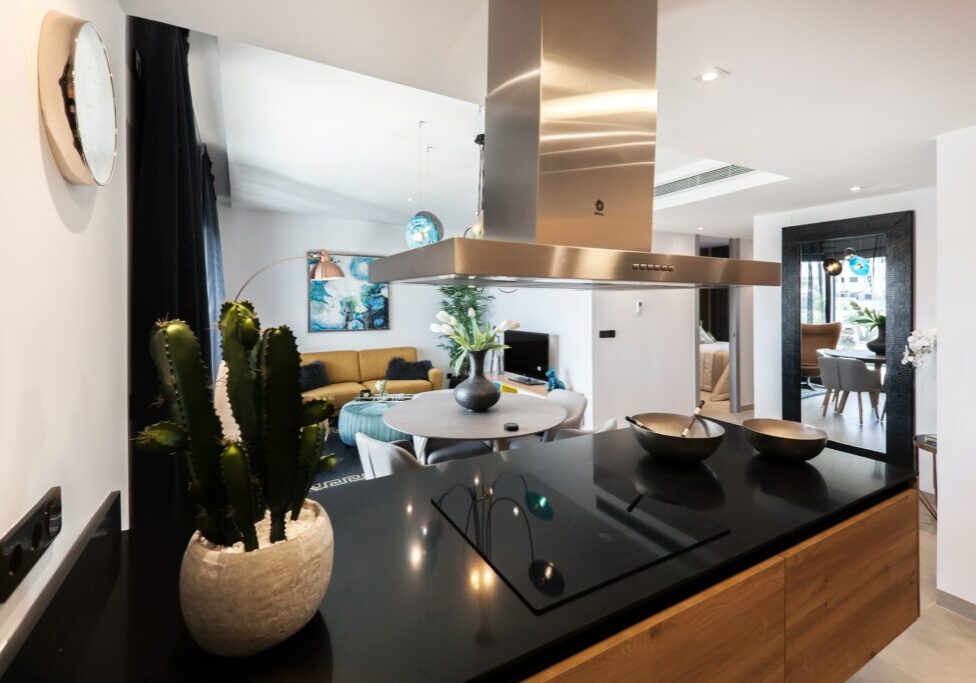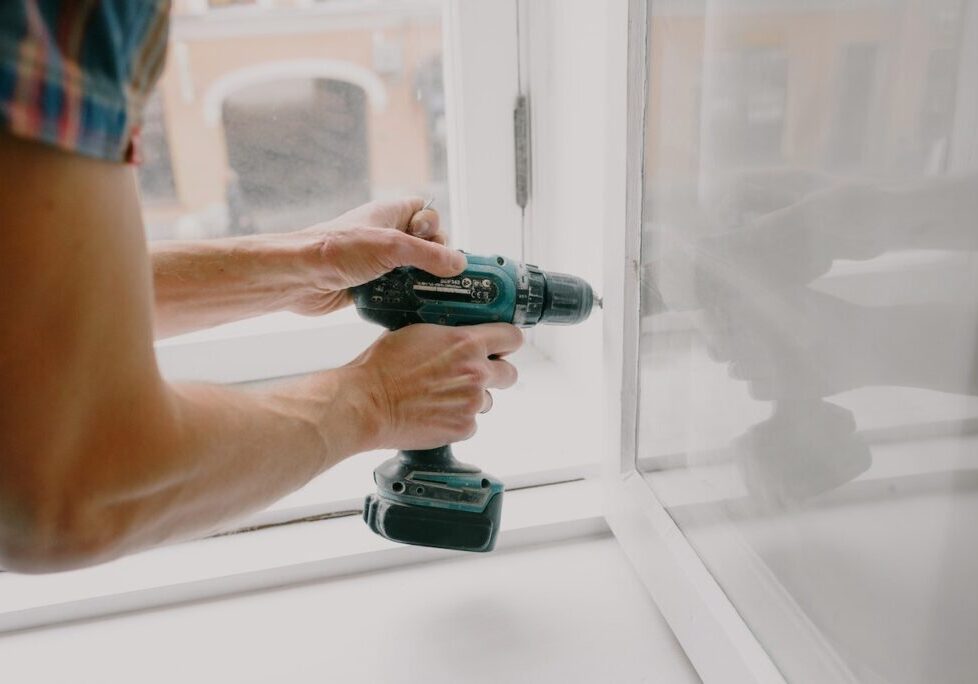12 Cheap Ways to Cover Dirt in Your Backyard
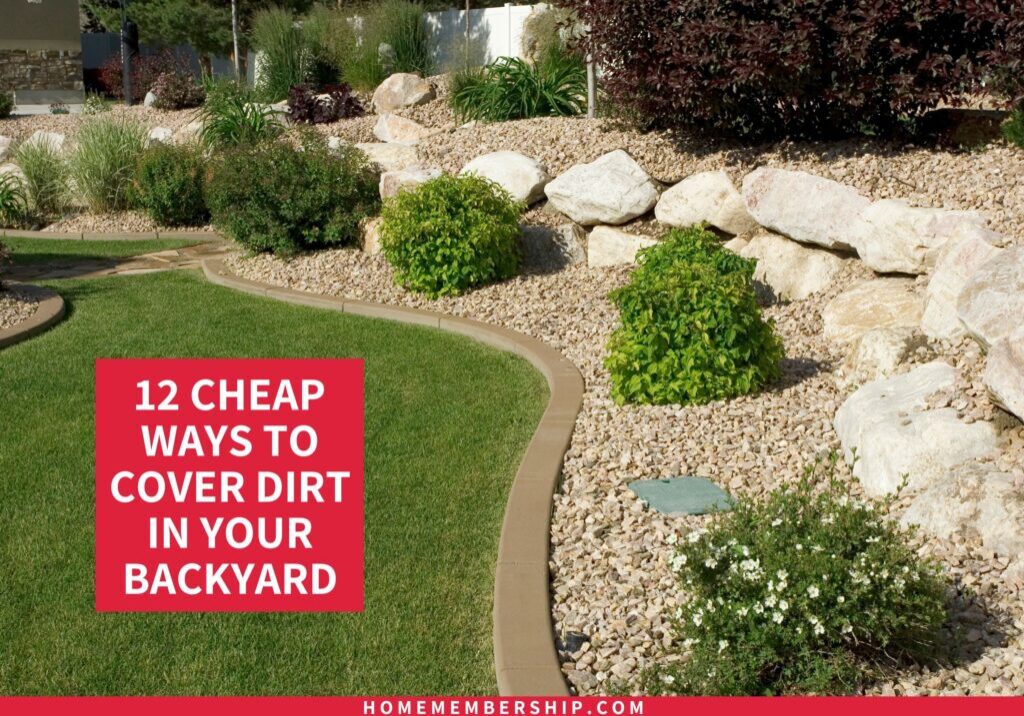
Do you have bare dirt that you want to cover up on a budget? We can help you with our 12 Cheap Ways to Cover Dirt in Your Backyard!
Creating a beautiful and functional outdoor space doesn’t have to break the bank. If you find yourself with bare dirt areas in your backyard, fear not! In this blog post, we’ll explore 12 cheap and creative ways to cover dirt, from wood chips to artificial grass, and everything in between. Let’s transform your outdoor space into a picturesque haven without burning a hole in your pocket.
12 Cheap Ways to Cover Dirt in Your Backyard
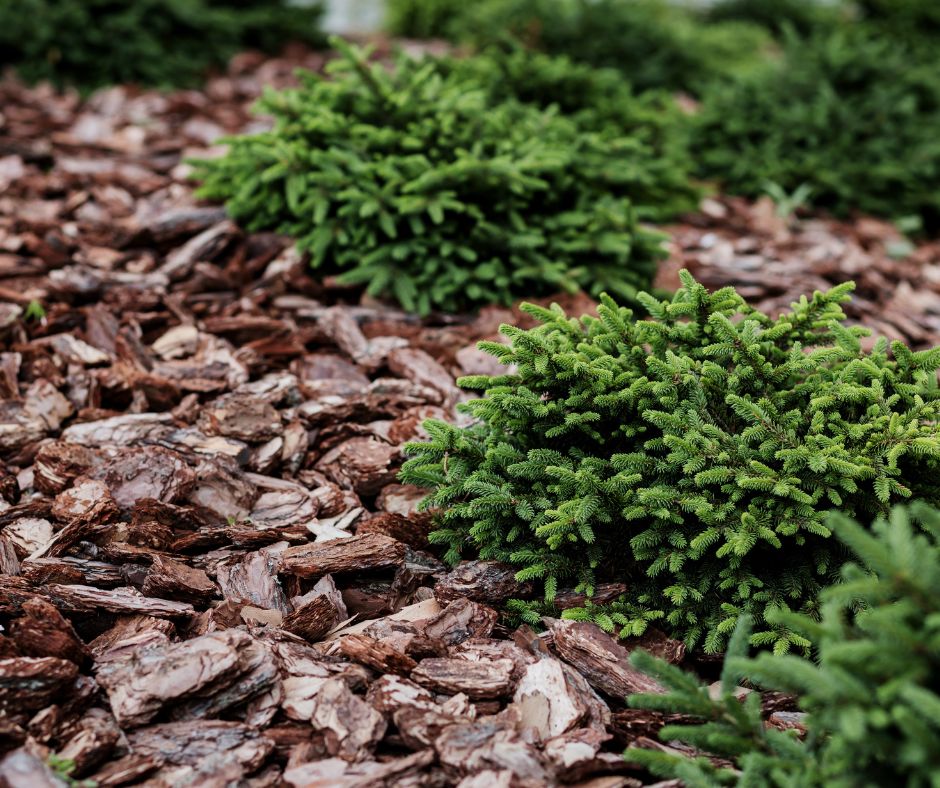
1. Wood Chips:
Wood chips are an excellent ground cover option that adds a natural and rustic touch to your backyard. They are one of the cheapest ways to cover large areas, providing an attractive solution for flower beds, around trees, or even as a base for outdoor furniture.
One of the best parts about using wood chips is that they are a cheap way to cover square footage in your backyard. Unlike expensive options like composite decks or elaborate water features, wood chips provide an organic and natural look without the regular maintenance and much time that these alternatives demand.
Eco-friendly!
When considering backyard patio ideas, especially for a dirt yard, wood chips are a good way to create an eco-friendly space without breaking the bank. You can use them to define the size of your backyard, making it an affordable and low-fuss alternative to other materials like concrete pavers.
For an added benefit, wood chips can be incorporated into various landscaping ideas, creating winding paths or outlining garden beds. They’re a perfect paving solution for those looking for an affordable way to spruce up their outdoor space without the high costs associated with labor and materials like rock walls or pea gravel.
Low Cost
Unlike the average cost of sods or the higher price of artificial turf, wood chips are a budget-friendly approach that requires little time and effort. You can even use them around a backyard fire pit, creating a cozy and natural setting without incurring extra costs.
If you have a sunny backyard, wood chips can also be a great alternative to grass backyard ideas. They reduce the amount of dust and require less time and effort than traditional lawn maintenance.
Using wood chips in your backyard can be the best thing for creating a beautiful, budget-friendly, and eco-friendly space. With their affordability, versatility, and easy maintenance, wood chips provide an excellent foundation for various outdoor design ideas, ensuring that your backyard becomes a welcoming retreat without the hefty price tag.
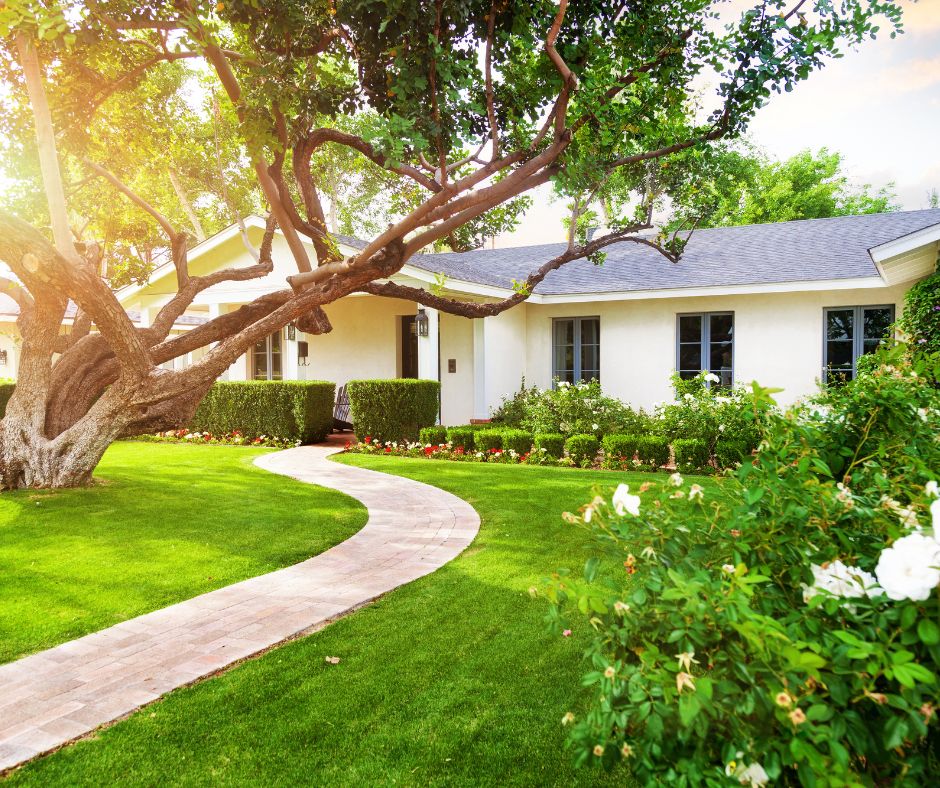
2. Install Sod or Plant Grass Seeds:
A natural grass lawn offers a multitude of benefits that contribute to its enduring popularity in landscaping. Here are some key advantages of having a natural grass lawn:
- Aesthetic Appeal: One of the primary benefits of a natural grass lawn is its visual appeal. The lush green carpet provides a classic and timeless look to your outdoor space, enhancing the overall aesthetics of your property.
- Environmental Benefits: Natural grass contributes to environmental sustainability. It absorbs carbon dioxide and releases oxygen during the process of photosynthesis, helping improve air quality. Grass also acts as a natural filter, trapping dust and pollutants and preventing them from becoming airborne.
- Cooling Effect: Grass has a cooling effect on the surrounding environment. Its natural transpiration process releases moisture into the air, providing a cooling effect that can be especially beneficial in warmer climates. This can help create a more comfortable outdoor space for recreation and relaxation.
- Erosion Control: The dense root system of grass helps prevent soil erosion. Grass binds the soil particles together, reducing the risk of runoff during heavy rain and promoting water absorption. This is particularly important for maintaining soil health and preventing sedimentation in nearby water bodies.
- Habitat for Wildlife: Natural grass lawns can provide habitats for various insects, birds, and small animals. Biodiversity in your lawn contributes to the overall ecological balance and can attract beneficial organisms, such as pollinators.
- Recreation and Play: A well-maintained natural grass lawn provides an excellent surface for various recreational activities and play. It’s soft, comfortable, and safe for children and pets to enjoy outdoor activities, sports, and games.
- Versatility: Natural grass lawns are versatile and can be adapted to different landscapes and design preferences. Whether you prefer a manicured lawn for formal gatherings or a more relaxed and natural look, grass can be tailored to suit your landscaping vision.
- Thermal Insulation: Grass acts as a natural insulator, helping to regulate soil temperature. This can be beneficial for the health of plants and the overall ecosystem beneath the surface.
- Stress Reduction: Spending time on a natural grass lawn can have therapeutic effects. The green color and soft texture create a calming environment, promoting relaxation and stress reduction.
- Property Value: Well-maintained natural grass lawns can enhance the overall value of a property. They contribute to curb appeal and are often considered an attractive feature by potential buyers.
While there are ongoing discussions about water usage and maintenance requirements, the benefits of a natural grass lawn, when properly managed, contribute significantly to the overall well-being of the environment and the enjoyment of outdoor spaces. Regular care, proper watering, and sustainable practices can help maintain a healthy and vibrant natural grass lawn for years to come.
3. Artificial Grass:
For a lush and evergreen look, consider artificial grass. It’s a great option for those who want a low-maintenance lawn without the regular upkeep. Look for affordable options at your local home improvement store to give your backyard a green makeover.
Artificial grass, also known as synthetic turf, comes with several benefits that make it an attractive alternative to natural grass in certain situations. Here are some key advantages of artificial grass:
- Low Maintenance: One of the most significant benefits of artificial grass is its minimal maintenance requirements. Unlike natural grass, which demands regular mowing, watering, and fertilizing, synthetic turf only needs occasional cleaning to remove debris.
- Water Conservation: Artificial grass is an excellent choice in regions where water conservation is crucial. Since it doesn’t require regular watering, it helps reduce water consumption, making it an environmentally friendly option in areas facing water scarcity or drought conditions.
- Year-Round Greenery: Regardless of weather conditions, artificial grass maintains its lush, green appearance throughout the year. It is not affected by changes in temperature, sunlight, or seasonal variations, ensuring a consistently attractive landscape.
- Durability: Synthetic turf is designed to withstand heavy foot traffic and resist wear and tear. It is particularly beneficial in areas where natural grass struggles to thrive due to high usage, such as sports fields, playgrounds, or heavily trafficked backyard spaces.
- Allergy-Friendly: For individuals with grass allergies, artificial grass provides relief as it doesn’t produce pollen. It offers a hypoallergenic alternative that allows people to enjoy a green outdoor space without triggering allergic reactions.
- No Pesticides or Fertilizers: Maintaining natural grass often involves the use of pesticides and fertilizers to control weeds and promote growth. Artificial grass eliminates the need for these chemicals, contributing to a healthier and more environmentally friendly outdoor environment.
- Consistent Appearance: Synthetic turf provides a consistent and uniform appearance, free from uneven patches, brown spots, or bare areas that can be common in natural grass lawns. This feature is particularly appealing for those seeking a pristine and manicured look.
- Reduced Mud and Mess: Artificial grass eliminates the problem of mud and dirt being tracked indoors during rainy or wet conditions. It remains mud-free, offering a cleaner and more usable outdoor space, especially in high-traffic areas or around entrances.
- Versatility: Artificial grass can be installed in various locations and environments, including areas where natural grass struggles to grow, such as shaded spots or heavily compacted soil. It’s also suitable for rooftop gardens, balconies, and indoor spaces.
- Long-Term Cost Savings: While the initial installation cost of artificial grass may be higher than natural grass, the long-term savings in terms of water bills, maintenance equipment, and ongoing care can make it a cost-effective choice over time.
- Customization: Synthetic turf allows for customization in terms of color, texture, and design. Homeowners and landscapers can choose from a variety of options to create a tailored outdoor space that meets specific aesthetic preferences.
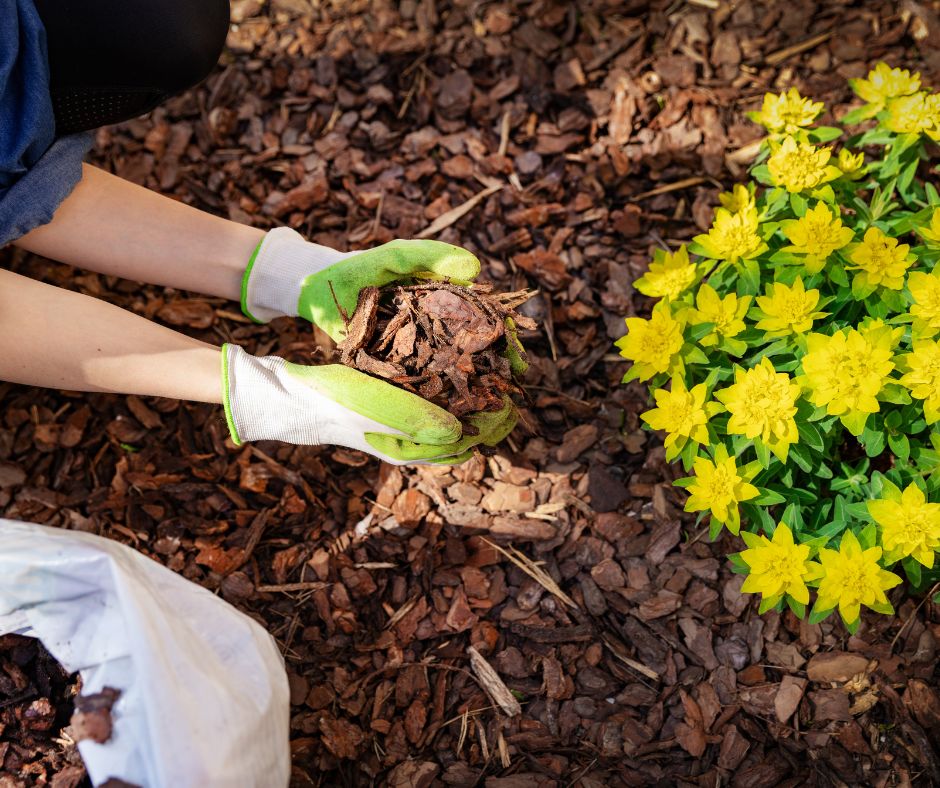
4. Organic Mulch:
An eco-friendly and cost-effective solution is to use organic mulch. It not only covers the dirt but also enriches the soil as it decomposes, making it an excellent choice for flower beds, vegetable gardens, and other outdoor spaces.
Organic mulch provides a myriad of benefits for gardeners and landscapers, contributing to soil health, moisture retention, and weed suppression. One of the primary advantages is its ability to enhance soil fertility as it decomposes, releasing valuable nutrients into the ground. Additionally, organic mulch acts as a natural insulator, regulating soil temperature and protecting plant roots from extreme weather conditions. Its moisture retention properties reduce the need for frequent watering, promoting water conservation. Furthermore, organic mulch forms a protective barrier that helps suppress weeds, minimizing competition for nutrients and sunlight. Examples of organic mulch include:
- Straw: Often used in vegetable gardens, straw is lightweight and effective in retaining moisture.
- Leaves: Shredded or whole leaves make excellent mulch, adding organic matter to the soil as they decompose.
- Grass Clippings: A readily available mulching option, grass clippings help retain moisture and add nitrogen to the soil.
- Compost: Rich in nutrients, compost serves as both a soil amendment and an effective mulch.
- Pine Straw: Commonly used in acid-loving plant beds, pine straw is lightweight and slow to decompose.
- Bark Mulch: Available in various sizes and textures, bark mulch is aesthetically pleasing and effective in retaining moisture.
These organic mulches not only promote soil health but also contribute to a sustainable and environmentally friendly approach to landscaping.
5. Build a Deck:
If you’re looking for a durable and long-lasting option, composite decking is a fantastic choice. While it may have a higher upfront cost, it pays off in the long run with its low maintenance requirements.
- Transformative Functionality:
Building a deck over bare dirt in your backyard introduces transformative functionality, converting uneven or barren ground into a smooth and inviting outdoor living space. This newly created area becomes a versatile extension of your home, ideal for various activities such as dining, entertaining, or simply enjoying the outdoors. - Enhanced Aesthetics and Value:
A deck serves as an aesthetic enhancement to your property, adding visual appeal and creating an attractive focal point in your backyard. Beyond aesthetics, it contributes to the overall value of your home, providing an appealing feature that can be a key selling point. - Preventing Indoor Mess:
Constructed as a barrier between your home and the bare ground, a deck helps prevent mud and dirt from being tracked indoors, especially during inclement weather. This practical benefit ensures that your indoor spaces remain cleaner and more comfortable. - Customization Options:
Deck construction offers a range of customization options, allowing you to choose materials, colors, and design elements that seamlessly integrate with your home and personal style. This flexibility ensures that your deck becomes a cohesive and personalized outdoor space. - Protection for Outdoor Furniture:
A well-built deck provides a clean and dry surface, significantly extending the longevity of outdoor furniture. This protection against ground moisture and dirt enhances the overall durability and appearance of your outdoor furnishings. - Increased Property Enjoyment:
Ultimately, building a deck over bare dirt in your backyard enhances the overall enjoyment of your property. It provides a designated space for outdoor activities and relaxation, encouraging you to make the most of your outdoor living area and creating lasting memories in a comfortable and stylish setting.

6. Pavers and Stone:
Create pathways or even a paved courtyard using stone pavers. Hardware stores offer a variety of options, allowing you to choose a style that fits your aesthetic while covering the dirt efficiently.
While they are not the cheapest option on our list, paver patios offer a range of benefits, making them a popular choice for outdoor living spaces:
Aesthetic Appeal: Paver patios enhance the visual appeal of your outdoor area, providing a versatile and customizable surface with various color, pattern, and texture options.
Durability: Pavers are durable and can withstand heavy foot traffic, making them a long-lasting solution for outdoor spaces. They resist cracking and can endure the elements well.
Low Maintenance: Paver patios require minimal maintenance compared to other outdoor surfaces. Routine cleaning and occasional joint sand replenishment are typically all that’s needed to keep them looking pristine.
Easy Repair: In the event of damage, individual pavers can be easily replaced without affecting the entire patio, offering a cost-effective and straightforward repair solution.
Versatility: Pavers come in various shapes and sizes, allowing for creative design possibilities. They can be arranged in intricate patterns, providing a customized and unique look for your patio.
Quick Installation: Paver patio installations are relatively quick compared to other hardscaping options. This results in less disruption to your outdoor activities during the construction process.
Improved Drainage: The joints between pavers allow for water drainage, preventing pooling and promoting a drier surface. This is especially beneficial in areas prone to heavy rainfall.
Increased Property Value: A well-designed and properly installed paver patio can enhance the overall value of your property, offering an attractive and functional outdoor living space that appeals to potential buyers.
Environmentally Friendly: Pavers are often made from natural materials, and their installation allows for permeability, reducing runoff and aiding in water conservation efforts.
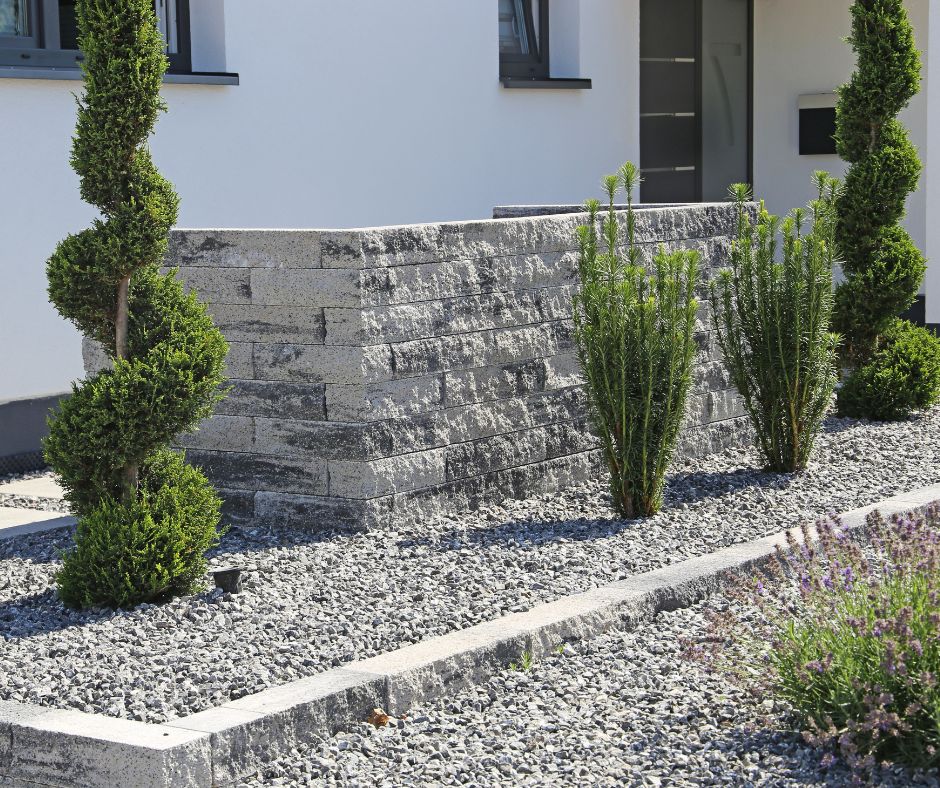
7. Gravel and Pebbles:
For a unique and visually appealing ground cover, use gravel or pebbles. Create rock gardens or winding paths to add focal points and cover large areas of bare dirt.
Here’s a list of some of our favorite gravel options for landscaping:
- Pea Gravel: Small, rounded stones that are often smooth, pea gravel is popular for pathways, driveways, and decorative accents in landscaping.
- Crushed Stone: Available in various sizes and colors, crushed stone is versatile and commonly used for driveways, pathways, and as a base material for other landscaping projects.
- River Rock: Smooth and naturally rounded, river rock is often used for decorative purposes in gardens, around water features, or as an attractive ground cover.
- Decomposed Granite: A granular material that forms as granite breaks down over time, decomposed granite is ideal for pathways, patios, and as a natural mulch.
- Lava Rock: Lightweight and porous, lava rock is commonly used for decorative purposes in gardens and around plant beds. Its unique texture and color add visual interest.
- Marble Chips: Crushed or chipped marble stones are used for decorative landscaping, offering a clean and bright appearance that works well in formal garden settings.
- Crushed Shell: Crushed shells, often sourced from clam or oyster shells, provide a coastal and natural look, making them suitable for pathways and as ground cover in coastal landscapes.
- Mexican Beach Pebbles: Smooth, rounded stones with a polished appearance, Mexican beach pebbles are often used for decorative accents in gardens, water features, and as a contrast in mulched areas.
- White Marble Gravel: Known for its elegant and pristine appearance, white marble gravel is often used in formal landscaping designs and contrasts well with green foliage.
- Basalt Gravel: Dark-colored and dense, basalt gravel is a durable option suitable for driveways, pathways, and as a ground cover in modern or rustic landscapes.
8. Rubber Mulch:
Rubber mulch has gained popularity as a versatile and sustainable alternative to traditional organic mulches. Made from recycled rubber, typically sourced from old tires, rubber mulch provides a long-lasting and environmentally friendly solution for landscaping. Its unique composition offers numerous benefits, including excellent durability, resistance to decay, and resilience against harsh weather conditions. Unlike organic mulches, rubber mulch does not decompose quickly, ensuring a more extended lifespan and reducing the need for frequent replenishment. This characteristic makes it particularly suitable for areas with heavy foot traffic or where traditional mulches might break down rapidly.
Beyond its durability, rubber mulch is known for its effective weed suppression properties. The dense composition and non-organic nature of the material create a barrier that inhibits weed growth, minimizing the need for herbicides and tedious weeding tasks. Additionally, rubber mulch acts as an insulator, helping to regulate soil temperature and moisture levels, which can be beneficial for plant health. While some may have concerns about the environmental impact of using recycled rubber, the reuse of tires in landscaping helps reduce waste in landfills and provides a sustainable solution for creating attractive and low-maintenance outdoor spaces.
9. Outdoor Rugs:
Transform your outdoor space instantly by using budget-friendly outdoor rugs. They come in various sizes and designs, providing an easy fix for plain dirt areas.
Outdoor rugs have become essential accessories for enhancing the comfort and aesthetics of outdoor living spaces. Crafted from durable materials that withstand exposure to the elements, these rugs bring a touch of indoor coziness to patios, decks, and gardens. Typically made from weather-resistant materials such as polypropylene, outdoor rugs resist fading, mold, and mildew, ensuring they maintain their vibrant colors and integrity even in the face of sun, rain, or high foot traffic. Their robust construction allows them to withstand the rigors of outdoor use, making them an ideal choice for creating inviting and stylish environments in areas traditionally overlooked for decor.
In addition to their resilience, outdoor rugs offer a versatile design element, helping to define specific zones within your outdoor space. Whether used to delineate a seating area, add a splash of color, or tie together different elements of your outdoor decor, these rugs contribute to the overall aesthetic appeal of your backyard. With a wide range of patterns, colors, and sizes available, outdoor rugs provide homeowners with the flexibility to express their style and create a cozy, well-curated atmosphere that seamlessly transitions from indoor to outdoor living spaces.
10. DIY with Decorative Plants:
Explore easy DIY landscaping ideas by incorporating free or low-cost plants. Potted plants and flower beds can add color and texture, covering dirt while enhancing the overall aesthetics.
Landscaping with plants doesn’t have to break the bank, and there are several affordable and creative ways to enhance your outdoor space on a budget.
1. Propagation and Seedlings:
Take advantage of nature’s generosity by propagating plants from seeds or cuttings. Many plants can be easily grown from seeds, and you can also ask friends or neighbors for cuttings from their existing plants. This not only saves money but also adds a personal touch to your landscape.
2. Local Plant Sales and Nurseries:
Keep an eye out for local plant sales, discounts, or clearance events at nurseries. These venues often offer reasonably priced plants that might be overstocked or slightly matured but still thrive when properly cared for.
3. Native Plants:
Opt for native plants that are adapted to your local climate and soil conditions. Native plants are often hardy, low-maintenance, and well-suited to your environment, reducing the need for costly interventions such as excessive watering or fertilization.
4. Perennials and Self-Seeding Plants:
Invest in perennials, as they return year after year, providing long-term value for your investment. Additionally, consider self-seeding plants that spread naturally, filling your garden with new growth without the need for additional purchases.
5. Online and Community Swaps:
Explore online platforms or local community groups where gardening enthusiasts exchange or give away plants. This is an excellent way to diversify your garden without spending money, while also connecting with fellow gardeners.
6. DIY Mulch and Compost:
Create your own mulch and compost by recycling yard waste and kitchen scraps. Mulch helps retain soil moisture and suppress weeds, while homemade compost enriches the soil, promoting healthy plant growth without the need for expensive fertilizers.
7. Seasonal Sales and Discounts:
Take advantage of end-of-season sales or discounts at garden centers. While the selection might be limited, this is an opportune time to stock up on discounted plants, bulbs, or seeds for the upcoming seasons.
8. Divide and Conquer:
Many plants can be divided and replanted, creating new clusters without the need for additional purchases. Divide perennials like hostas, daylilies, or ornamental grasses to expand your garden at no extra cost.
9. Community Gardens or Plant Swaps:
Explore community gardens or local plant swap events. These gatherings provide opportunities to exchange plants, seeds, or gardening tips with others in your community, allowing you to diversify your garden without spending money.
10. Optimize Plant Placement:
Strategically plan the placement of your plants to maximize their visual impact. Clustering plants together can create a lush and full appearance, making your garden look more curated and extensive than it actually is.
By incorporating these affordable strategies, you can create a beautiful and thriving landscape without exceeding your budget, proving that a stunning backyard is within reach for everyone.
11. Vegetable Gardens:
Combine functionality and beauty by incorporating vegetable gardens into your backyard. Not only do they cover dirt, but they also provide fresh produce, making it a practical and aesthetically pleasing option.
Budget vegetable gardening is a practical and rewarding way to enjoy a fresh and abundant harvest without breaking the bank. Starting with seeds is a cost-effective approach, as packets are generally more affordable than purchasing established seedlings. Opting for open-pollinated or heirloom varieties not only saves money initially but allows for seed-saving, ensuring a sustainable and self-sufficient garden for future seasons. Many vegetables, such as tomatoes, peppers, and lettuce, can be successfully grown from seeds in inexpensive containers or homemade seed trays.
Utilizing inexpensive or repurposed materials is a hallmark of budget vegetable gardening. Raised beds can be constructed using reclaimed wood or cinder blocks, providing an efficient and aesthetically pleasing way to organize the garden. Composting kitchen scraps, leaves, and yard waste creates nutrient-rich soil amendments at no additional cost. DIY solutions, such as homemade trellises and protective covers, can be crafted from salvaged materials or low-cost alternatives. Engaging in community seed swaps or joining local gardening groups often allows for the exchange of seeds, plants, and valuable gardening insights, fostering a sense of community and reducing expenses associated with purchasing new varieties. Additionally, embracing water-saving techniques, like mulching and efficient watering practices, helps minimize utility costs while maintaining a thriving and budget-friendly vegetable garden.
12. Outdoor Tiles:
For a clean and modern look, cover dirt areas with interlocking outdoor tiles. These tiles come in various patterns and styles, providing an excellent solution for creating a polished and low-maintenance outdoor space.
One of the notable benefits of interlocking outdoor tiles is their DIY-friendly nature. Homeowners can easily install them, saving on installation costs and making them an accessible option for those looking to upgrade their outdoor spaces. The tiles are available in various materials, including composite, wood, or rubber, providing options that suit different aesthetic preferences and functional needs. Their versatility extends to portability, allowing for easy removal and reinstallation, making them suitable for temporary outdoor events or changing landscape designs. Overall, interlocking outdoor tiles offer a practical and customizable solution for creating durable and visually appealing surfaces in outdoor areas.
Conclusion:
Transforming your backyard doesn’t have to be an expensive endeavor. By exploring these 12 budget-friendly ways to cover dirt, you can create a stunning outdoor space that reflects your style and enhances your home. Whether you prefer the natural look of wood chips, the convenience of artificial grass, or the durability of composite decking, there’s a solution for every budget and taste. Start your home improvement journey today and turn your backyard into a beautiful and eco-friendly oasis.
Bee Hive Vs Wasp Nest – How To Tell The Difference
Check out HomeMembership to find out how a home warranty can help make homeownership easier!

